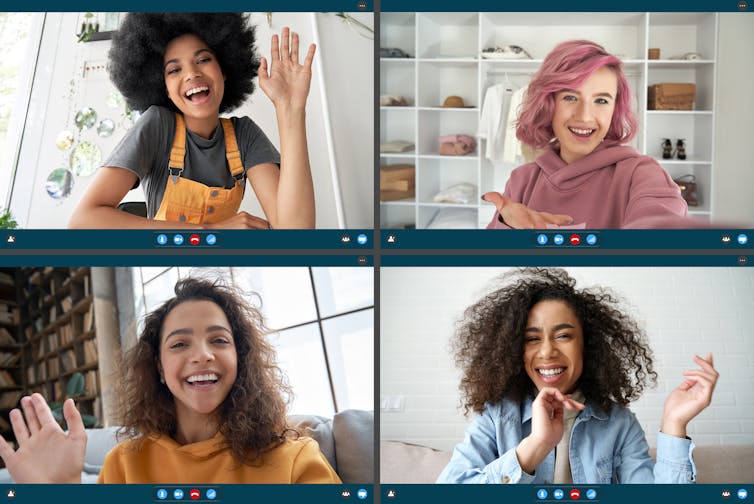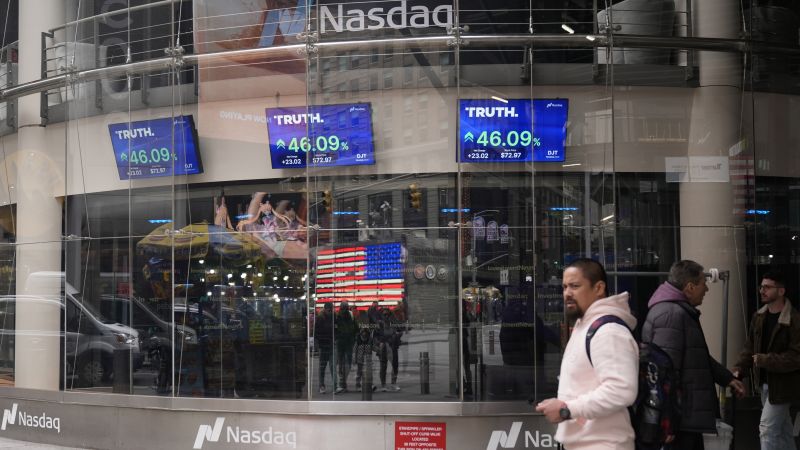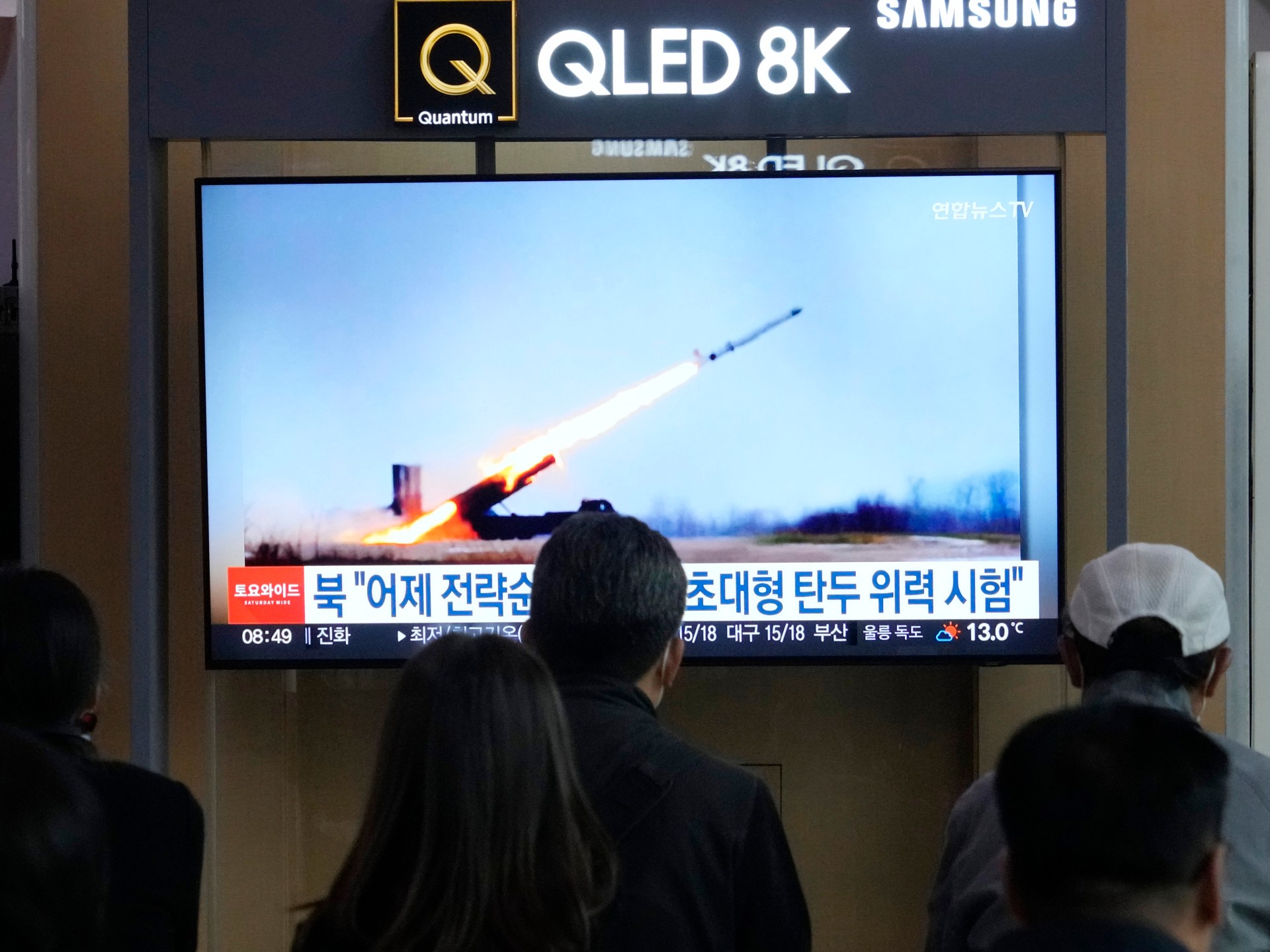Media
How social media can crush your self-esteem – The Conversation CA
We all have a natural tendency to compare ourselves to others, whether intentionally or not, online or offline. Such comparisons help us evaluate our own achievements, skills, personality and our emotions. This, in turn, influences how we see ourselves.
But what impact do these comparisons have on our well-being? It depends on how much comparing we do.
Comparing ourselves on social media to people who are worse off than we are makes us feel better. Comparing ourselves to people who are doing better than us, however, makes us feel inferior or inadequate instead. The social media platform we choose also affects our morale, as do crisis situations like the COVID-19 pandemic.
As a PhD student in psychology, I am studying incels — men who perceive the rejection of women as the cause of their involuntary celibacy. I believe that social comparison, which plays as much a role in these marginal groups as it does in the general population, affects our general well-being in the age of social media.
An optimal level of comparison
The degree of social comparison that individuals carry out is thought to affect the degree of motivation they have. According to a study by researchers at Ruhr University in Bochum, Germany, there is an optimal level of perceived difference between the self and others that maximizes the effects of social comparison.

(Shutterstock)
Specifically, if we see ourselves as vastly superior to others, we will not be motivated to improve because we already feel that we are in a good position. Yet, if we perceive ourselves as very inferior, we will not be motivated to improve since the goal seems too difficult to achieve.
In other words, the researchers note, beyond or below the optimal level of perceived difference between oneself and another, a person no longer makes any effort. By perceiving oneself as inferior, the individual will experience negative emotions, guilt and lowered pride and self-esteem.
Unrealistic comparisons on social media
Social comparisons therefore have consequences both for our behaviour and for our psychological well-being. However, comparing yourself to others at a restaurant dinner does not necessarily have the same effect as comparing yourself to others on Facebook. It is easier to invent an exciting existence or embellish certain aspects of things on a social media platform than it is in real life.
The advent of social media, which allows us to share content where we always appear in our best light, has led many researchers to consider the possibility that this amplifies unrealistic comparisons.
Research shows that the more time people spend on Facebook and Instagram, the more they compare themselves socially. This social comparison is linked, among other things, to lower self-esteem and higher social anxiety.

(Shutterstock)
A study conducted by researchers at the National University of Singapore explains these results by the fact that people generally present positive information about themselves on social media. They can also enhance their appearance by using filters, which create the impression that there is a big difference between themselves and others.
In turn, researchers working at Facebook observed that the more people looked at content where people were sharing positive aspects of their lives on the platform, the more likely they were to compare themselves to others.
COVID-19: Less negative social comparison
However, could the effect of this comparison in a particularly stressful context like the COVID-19 pandemic be different?
A study from researchers at Kore University in Enna, Italy, showed that before lockdowns, high levels of online social comparison were associated with greater distress, loneliness and a less satisfying life. But this was no longer the case during lockdowns.
One reason for this would be that by comparing themselves to others during the lockdown, people felt they were sharing the same difficult experience. That reduced the negative impact of social comparisons. So, comparing oneself to others online during difficult times can be a positive force for improving relationships and sharing feelings of fear and uncertainty.

(Shutterstock)
A different effect depending on the social media
There are distinctions to be made depending on which social media platform a person is using. Researchers at the University of Lorraine, France, consider that social media platforms should not be all lumped together.
For example, the use of Facebook and Instagram is associated with lower well-being, while Twitter is associated with more positive emotions and higher life satisfaction. One possible explanation: Facebook and Instagram are known to be places for positive self-presentation, unlike Twitter, where it is more appropriate to share one’s real opinions and emotions.
Trying to get social support on social media during the COVID-19 pandemic may reactivate negative emotions instead of releasing them, depending on which social media platform a person is using.
Many things motivate us to compare ourselves socially. Whether we like it or not, social media exposes us to more of those motivations. Depending on the type of content that is being shared, whether it is positive or negative, we tend to refer to it when we are self-evaluating. Sharing content that makes us feel good about ourselves and garners praise from others is nice, but you have to consider the effect of these posts on others.
Yet overall, I believe that sharing your difficulties in words, pictures or videos can still have positive effects and bring psychological benefits.
Media
Trump Media warns Nasdaq of suspected market manipulation – CNN


New York
CNN
—
Trump Media, the parent company of the former president’s Truth Social, alerted Nasdaq Inc. on Thursday of what the company suspects is illegal activity driving down the price of its shares.
In a letter to the exchange, Devin Nunes, the CEO of Trump Media (DJT), laid out what he believes could be deemed “naked” short selling.
Naked short selling involves someone selling shares they don’t own or have not borrowed. They will often then try to buy shares at a reduced price to cover themselves. This practice is generally illegal. Whereas legitimate short sellers, people who seek to benefit from declines in the value of a company’s shares, borrow the shares before selling.
The letter was made public Friday in a filing with the Securities and Exchange Commission.
Nunes also noted in the letter that shares of the company were on a list the Nasdaq maintains that’s “indicative of unlawful trading activity.”
“This is particularly troubling given that “naked” short selling often entails sophisticated market participants profiting at the expense of retail investors,” he said.
Representatives from Nasdaq and Trump Media did not immediately respond to requests for comment.
The company, which is majority-owned by former President Donald Trump, is down by around 50% from the all-time high it set on March 26, the day after it merged with a blank-check acquisition company to go public.
Shares of company have been on a wild ride since.
Although the company is still worth billions of dollars, it is struggling to make money and needs cash. Experts have warned investors to be careful if they choose to trade the stock, because the company doesn’t have the fundamentals to back up its sky-high valuation.
Trump Media lost $58 million in 2023 and made just $4.1 million in revenue.
Shares of the company ended Friday’s session about 9.6% higher.
This story has been updated with additional developments and context.
CNN’s Nicole Goodkind contributed to this report.
Media
Social Media Tips for Event Profs – BizBash


Social media changes rapidly—and what worked last year might not work in 2024. (Just look at X’s, or Twitter’s, dramatic revenue loss after many major platforms have stopped posting or advertising on the platform.) So what does work on social media right now, particularly for event professionals?
“We don’t just want our audience to understand what we do—we want them to know who we are,” says Zoe Haynes, the sales and marketing coordinator for PlatinumXP who oversees the event planning agency’s digital marketing. “Social media has evolved into a space for cultivating relationships and building trust. We utilize various platforms to tell stories—the story of an event transformation, behind the scenes with our production crew, or maybe even some fun office shenanigans with our CEO.”
Haynes’ focus on maintaining a consistent, authentic brand presence was a common theme among event professionals we spoke to about how they’re using social media right now. It’s all about “fostering an ongoing connection with our followers,” agrees Elias Contessotto, social media manager for event production company 15|40.
But remember: Not every platform is created equal. Contessotto stresses the importance of tailoring your approach with each platform—but also not being afraid to experiment a bit to ensure you’re staying ahead of trends and maximizing audience engagement. “By creatively testing new tactics, we gauge audience response and efficacy, gradually integrating successful approaches into our channels,” he explains. “This iterative process empowers us to refine our content strategy continuously, adapting to evolving trends and audience preferences.”
In short, “It’s all about meeting your audience where they’re at,” says Taylor Elliot, vice president of marketing and brand strategy for Shepard Exposition Services. “Social media is such a great tool to amplify your brand voice. I always say as marketers we need to create a system that works for our brand even when we are sleeping, and social media is one of the tools to help achieve this.”
LINKEDIN & INSTAGRAM
From our conversations, LinkedIn and Instagram quickly emerged as the two top platforms in the event industry. “Instagram is our go-to for showcasing stunning event photos—however, LinkedIn holds equal if not greater importance in our strategy,” explains Haynes. “While Instagram captures attention with its visual allure, LinkedIn allows us to dive deeper into industry conversations and build relationships with our peers.”
Contessotto likes to target a B2B audience with 15|40’s LinkedIn presence, posting content that focuses on industry insights, professional networking, and collaborations with studios. “We often share static posts similar to those on Instagram, tagging relevant studios to expand our reach,” he says, noting that LinkedIn posts are often reshared by team leaders and executives. “LinkedIn [also] serves as a prime platform for spotlighting press coverage, award nominations, and industry highlights.”
On Instagram, meanwhile, Contessotto expands 15|40’s content to cater to both B2B and B2C audiences. “We share visually engaging posts that highlight our expertise, industry leadership, and collaborations, appealing to a wider range of followers,” he says. “Instagram will have ‘POV’ content, which is much more personal and requires less high-quality tools to tell our story. I came to 15|40 from an influencer background, and from experience, I notice that more amateur content does better on that platform, like using an iPhone for reels rather than a DSLR camera.”
Heather Rouffe, director of sales at Atlas Event Rental, also appreciates the more personal touch that can come with Instagram. “Through that platform, we strive to educate the industry, create brand awareness, and most importantly to us, show the personal side to our company, brand, and rentals,” she explains. “With so much of the human side of things lost in a digital age, being personable and showing the people behind the brand is very important to us. We find the clients really appreciate the behind-the-scenes content and becoming familiar with the Atlas crew.”
On the flip side, though, that doesn’t mean LinkedIn can’t get a little personal. Al Mercuro, senior account director at trade show display company Genesis Exhibits, prioritizes LinkedIn due to the connections he’s been able to make with marketing directors and event directors at companies he’d like to do business with.
“I try to not promote my company as much as my brand by sharing information that will help them in their jobs—I find I get many referrals this way,” Mercuro notes. “I believe it is also a living resume; before I meet with someone, they will often check out my LinkedIn page to learn more about me. The more you can build up your profile and the number of connections you have adds to your value and makes it attractive to have them want to work with you.”
Jonathan Kazarian, the founder and CEO of Accelevents, also uses LinkedIn to build up his personal thought leadership—and therefore, build awareness of his event management software company. “Ninety-nine percent of what I share on LinkedIn is professional,” he says. “I’ll share something about my personal life to build connection, but that’s not my focus with LinkedIn.”
FACEBOOK, TWITTER (X), TIKTOK, & MORE
In a sign of changing times, most of the event professionals we spoke with are not investing much in Facebook or Twitter (now known as X)—though many are still updating them.
“We push out all of our Instagram content to our Facebook, to ensure our followers and intended audiences on both platforms are receiving similar content,” says Contessotto. “We also maintain our Twitter, or X, channel to share some of our event photos, as well as retweet content that clients we work with post that are captured at our events.”
Mercuro finds that Facebook is still an effective way to reach older generations—but for younger generations, he’s found some success marketing events on TikTok. “I am a board member of a nonprofit concert venue, and we needed to attract a younger audience,” he remembers. “I suggested we work with a local university and their marketing classes to take on a project like our organization to give them real-life experience. They chose to use TikTok to reach the younger demographics in our area, and it has been extremely successful.”
Contessotto agrees that TikTok is naturally very Gen Z-oriented, so content should be tailored accordingly. “We’ve noticed that we typically receive high engagement when our content is celebrity-focused,” he says. “Our team is constantly working to balance out our TikTok pages to include viral content, as well as videos that highlight our diverse portfolio of work to attract the right kind of audience.”
Haynes says she’s still exploring TikTok’s potential for Platinum XP. “I’ve noticed its popularity as a discovery platform,” she says. “It’s a great tool for driving awareness, but we should also consider whether our target audience is active on TikTok.” One tool that Haynes does invest time in? Pinterest. “It’s a powerful tool for SEO purposes. Its visual nature allows us to drive awareness to our website through captivating photos. By sparking curiosity, we encourage users to click through and explore further.”
Media
North Korea conducts test on new ‘super-large warhead’: State media – Al Jazeera English


Pyongyang says new warhead designed for cruise missiles, adding that a new anti-aircraft rocket was also tested.
North Korea has conducted a test on a “super-large warhead” designed for a strategic cruise missile, state media reports, adding that it also launched a new type of anti-aircraft missile.
“The DPRK Missile Administration has conducted a power test of a super-large warhead designed for ‘Hwasal-1 Ra-3’ strategic cruise missile”, KCNA news agency reported on Saturday, referring to North Korea by an abbreviation for its official name – Democratic People’s Republic of Korea.
North Korea also carried out a test launch on Friday afternoon of a “Pyoljji-1-2”, which state media said was a “new-type anti-aircraft missile”.
KCNA added that “a certain goal was attained” through the test without providing further details.
The weapons tests were part of the “regular activities of the administration and its affiliated defence science institutes”, KCNA reported, referencing the operation of “new-type weapon systems”.
The tests “had nothing to do with the surrounding situation”, KCNA added, but did not give any further information.
In early April, North Korea said it had tested a new medium-to-long-range solid-fuel hypersonic missile, with state media sharing a video of it being launched as leader Kim Jong Un looked on.
Cruise missiles are among a growing collection of North Korean weapons designed to overwhelm regional missile defences. They supplement the North’s vast arsenal of ballistic missiles, including intercontinental variants, which are said to be aimed at the continental United States.
Analysts say anti-aircraft missile technology is an area where North Korea could benefit from its deepening military cooperation with Russia, as the two countries align in the face of their separate, intensifying confrontations with the US.
The US and South Korea have accused the North of providing artillery shells and other equipment to Russia to help extend its warfighting ability in Ukraine.
Since its second nuclear test in 2009, Pyongyang has been under heavy international sanctions, but the development of its nuclear and weapons programmes has continued unabated.
-
Media22 hours ago
DJT Stock Rises. Trump Media CEO Alleges Potential Market Manipulation. – Barron's
-
Media24 hours ago
Trump Media alerts Nasdaq to potential market manipulation from 'naked' short selling of DJT stock – CNBC
-
Investment22 hours ago
Private equity gears up for potential National Football League investments – Financial Times
-
Real eState14 hours ago
Botched home sale costs Winnipeg man his right to sell real estate in Manitoba – CBC.ca
-
News20 hours ago
Canada Child Benefit payment on Friday | CTV News – CTV News Toronto
-
Business22 hours ago
Gas prices see 'largest single-day jump since early 2022': En-Pro International – Yahoo Canada Finance
-
Business14 hours ago
Dow Jones Rises But S&P, Nasdaq Fall; Nvidia, SMCI Flash Sell Signals As Bitcoin's Fourth Halving Arrives – Investor's Business Daily
-



 Politics23 hours ago
Politics23 hours agoIran news: Canada, G7 urge de-escalation after Israel strike – CTV News





